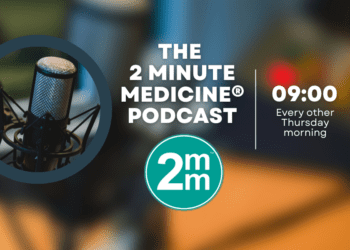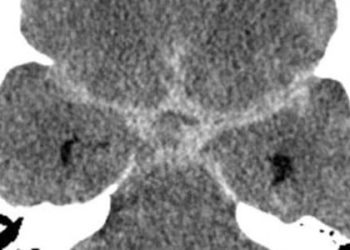Small and very small unruptured intracranial aneurysms may have little risk for rupture
1. Poor-quality evidence suggests unruptured intracranial aneurysms have low growth and rupture rates.
2. Very small unruptured intracranial aneurysms are associated with little or no risk for rupture.
Evidence Rating Level: 1 (Excellent)
Study Rundown: Due to advances in imaging, unruptured intracranial aneurysms (UIAs) are being discovered more frequently. Although most of these aneuryems are small (3 to 5 mm) or very small (≤ 3 mm), the American Heart Association and American Stroke Association does not include specific recommendations for counseling and management of these UIAs. Therefore, the authors of this study aimed to conduct a systematic literature review to summarize current evidence regarding the growth and rupture risk of UIAs that are 7mm and smaller. In general, the authors concluded that while current studies indicate low growth and rupture rates for small and very small UIAs, the literature lacks high quality evidence to support these findings. This study has several limitations. First, the definition of aneurysm growth was not consistent amongst papers included in the review. Additionally, treatment and follow-up methods were highly varied among high-risk patients in the selected articles. Overall, the results of the study suggest that further evidence is required to better support the findings that small and very small UIAs have low growth and rupture rates.
Click to read the study in the Annals of Internal Medicine
Relevant Reading: Risk–benefit analysis of the treatment of unruptured intracranial aneurysms
In-Depth [systematic review]: In this systematic review, 2845 initial records were identified through database searching. Following the application of inclusion and exclusion criteria, 26 studies were included in the final review. Of these studies, 8 described the growth rate of aneurysms 7 mm and smaller, while 10 specifically focused on UIAs 5mm and smaller and 5 discussed UIAs 3 mm and smaller. For aneurysms 5 mm and smaller (small UIAs), the rupture rate was <0.5%. Similarly, the rupture rate was 0% for aneurysms 3 mm and smaller (very small UIAs). The strength of this evidence was classified as very low quality.
Image: CC/Wiki
©2017 2 Minute Medicine, Inc. All rights reserved. No works may be reproduced without expressed written consent from 2 Minute Medicine, Inc. Inquire about licensing here. No article should be construed as medical advice and is not intended as such by the authors or by 2 Minute Medicine, Inc.


![Novel biodegradable sirolimus-eluting stents non-inferior to durable everolimus-eluting stents [BIOSCIENCE trial]](https://www.2minutemedicine.com/wp-content/uploads/2014/09/Taxus_stent_FDA-e1607803635904-350x250.jpg)




